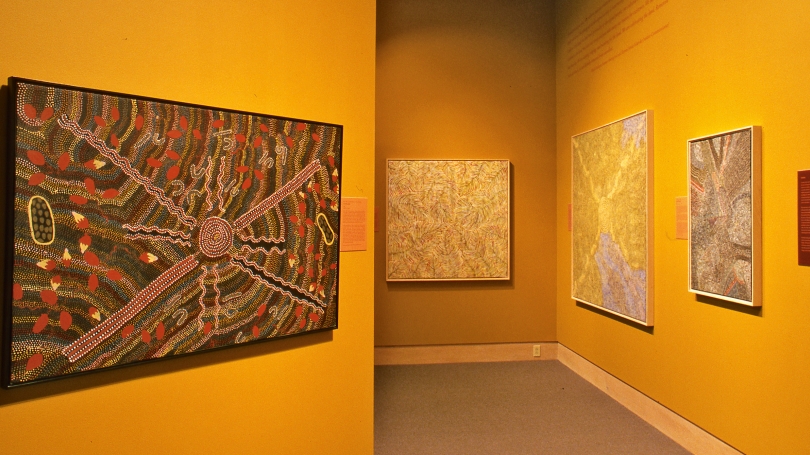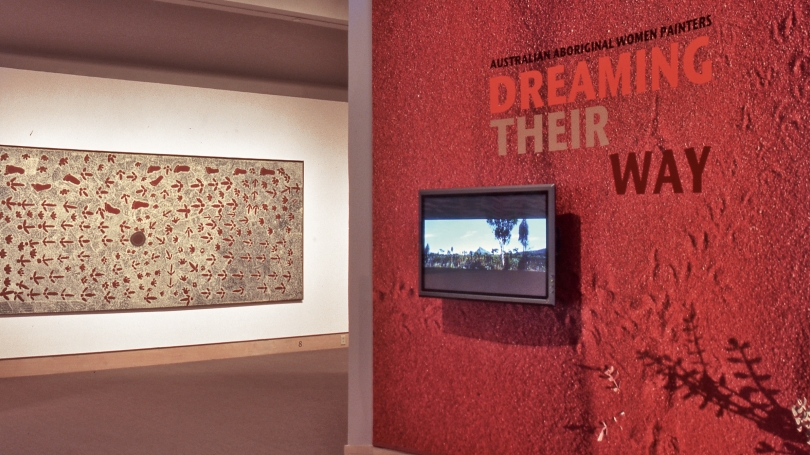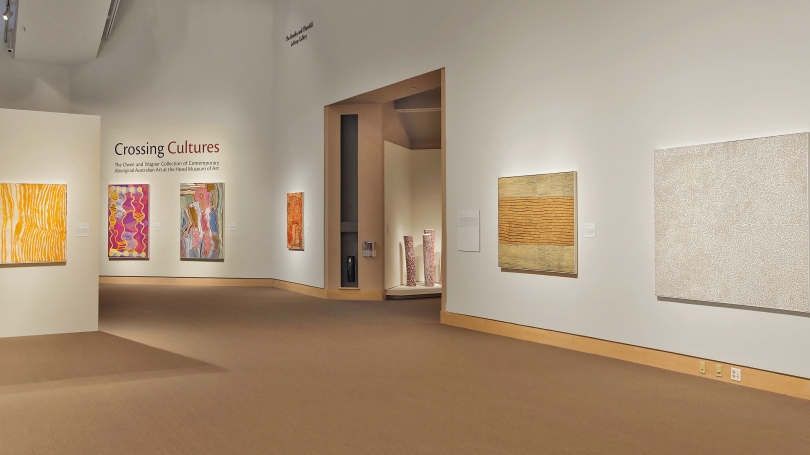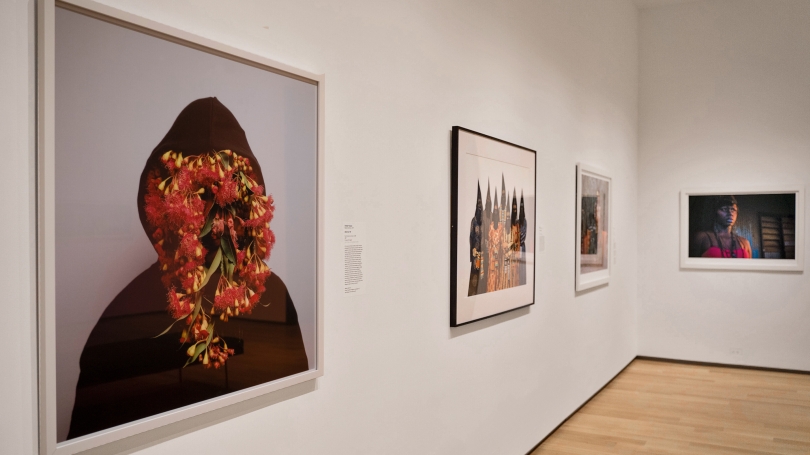JOHN R. STOMBERG, Virginia Rice Kelsey 1961s Director
Hood Quarterly, summer 2022
As the Hood Museum of Art, Dartmouth, approaches the twentieth anniversary (2024) of its commitment to the art and culture of Aboriginal Australians, a collaboration with the Kluge-Ruhe Aboriginal Art Collection of the University of Virginia on Madayin: Waltjan ga Waltjanbuy Yolŋuwu Miny'tji Yirrkalawuy | Eight Decades of Aboriginal Australian Bark Painting from Yirrkala, on view Sept. 3–Dec. 4, 2022, could not be more apt. In addition to our past work together, the two institutions share similar origin stories. John W. Kluge (1914–2010), who amassed the eponymously named collection at UVA, became enthralled with Aboriginal art when he attended the 1988 exhibition Dreamings: The Art of Aboriginal Australia at the Asia Society Galleries in New York City. It was at that very exhibition that Will Owen (1952–2015) and Harvey M. Wagner (1931–2017) were also introduced to this art. The encounter was destiny for all three, with Kluge forming the core collection now at Kluge-Ruhe and Owen and Wagner creating the collection of Aboriginal paintings, photographs, and sculpture that would eventually come to Dartmouth.
For the Hood Museum's part, the story of contemporary Aboriginal Australian art began in earnest in 2004 with a relatively humble exhibition that nonetheless had an outsized impact on the museum and its future. Dreaming of Country: Painting, Place, and People in Australia was curated by Barbara Thompson, the museum's curator of African, Oceanic, and Native American collections at that time. The exhibition featured eleven contemporary paintings depicting stories from the Dreaming. As Thompson wrote, "In these abstract works, desert artists evoke the connection between land and visual narrative in order to convey and preserve cultural heritage, identity, and knowledge despite two hundred years of oppressive settler governance and alienation from their homelands." These ideas were incendiary in a good way. The show allowed our audiences a firsthand experience of a major modern art movement relatively unknown in the United States and set the stage for future projects.
The following year (2005), Brian Kennedy became the director of the Hood Museum. Formerly the director of the National Gallery of Australia, Kennedy brought with him a passion for the art of Australia's Aboriginal artists. He worked together with the National Museum of Women Artists in Washington, DC, to organize the 2006 exhibition Dreaming Their Way: Australian Aboriginal Women Artists, with significant loans and scholarly input from Margo Smith at Kluge-Ruhe. Featuring both canvases and bark paintings by thirty-three female artists from across the Australian continent, the exhibition focused on the Aboriginal relationship to the land, understanding of the world, and sense of obligation to the culture.
Over the subsequent years, Kennedy would work with Owen and Wagner to secure plans for a future rife with collaborative projects centered on their ever-growing holdings. Owen and Wagner began giving works from their collection to the Hood in 2009. They also began working with curator Stephen Gilchrist on the project that would become Crossing Cultures: The Owen and Wagner Collection of Contemporary Aboriginal Australian Art. This extraordinary exhibition, which opened in 2012, formally marked Owen and Wagner's intention to leave their collection in its entirety to the Hood Museum of Art. The show included over one hundred works of contemporary Aboriginal art from outback communities and major metropolitan centers spanning five decades of creative activity.
With Wagner's death in 2017 (Owen had predeceased him in 2015), the remainder of the collection came to Dartmouth. In total, they had collected 882 works of Aboriginal Australian art, both rural and urban in origin and in a multitude of media. When the Hood Museum reopened in 2019 after nearly three years of renovation and expansion, one of its inaugural gallery installations was A World of Relations, an exhibition curated by Kluge-Ruhe curator Henry Skerritt and drawn entirely from the Owen and Wagner Collection. In 2020, in turn, the museum devoted its entrance gallery to Shifting the Lens: Contemporary Indigenous Australian Photography.
When the opportunity came our way to work together again with Smith, Skerritt, and the collections of Kluge-Ruhe, there was no hesitation. The Hood Museum of Art is proud and excited to collaborate on Madayin. Extending knowledge about, and familiarity with, this amazing form of creative practice holds an essential place in the Hood Museum's identity.




